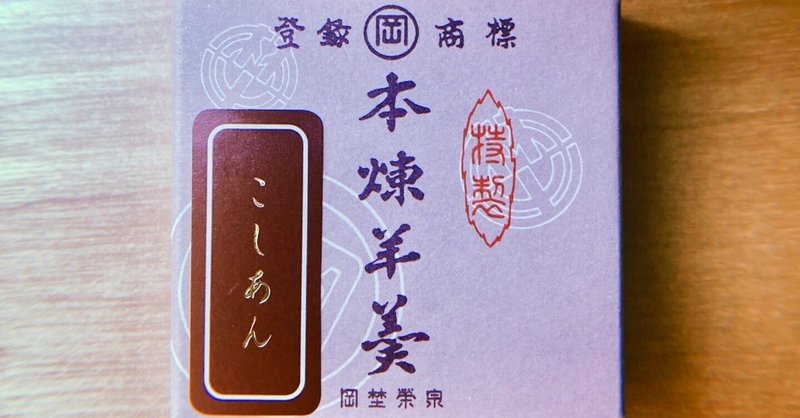
Dig Japan vol.3 “Yokan (羊羹)”
Yokan (羊羹) is wagashi made by pouring generally azuki bean paste into a mold called “Yokanfune (羊羹舟)” and solidified it with agar also known as “Kanten (寒天).” Its origin was a Chinese jelly from the gelatin derived from boiling sheep soup and introduced to Japan in Kamakura and Muromachi periods (around 1191) by Zen priests. How it developed to the current type?

First of all, there are two main types of yokan today: “Neri-yokan (練り羊羹)” and “Mizu-yokan (水羊羹).” Neri-yokan which “neri” means ‘kneading,’ is made with a large amount of agar and sugar, and has a long shelf life such that it can be stored over a year under suitable conditions. Mizu-yokan which “mizu” means ‘water,’ on the other hand, is made with less agar and characterized by its freshness and softness. Otherwise, there is “Mushi-yokan (蒸し羊羹)” which “mushi” means ‘steaming’ and made by steaming and solidifying flour or arrowroot powder instead of agar. When we simply say yokan, it often refers to neri-yokan, however, this first appeared in the late 18th century, and up until then, mushi-yokan's method had been used.
Yokan originated from a Chinese jelly from the gelatin derived from boiling sheep, but when it was brought to Japan by Zen monks, eating meat was prohibited in Zen Buddhism's precepts (Five Precepts) and their diet was vegetarian. So they used azuki beans, wheat flour or arrowroot powder instead of mutton. This allegedly has become the prototype of yokan in Japan.

The first appearance of yokan in Japanese literature is said to be “Teikin Orai (庭訓往来),” one of the elementary school textbooks used as calligraphy and readers at temple schools written in the early Muromachi period, late 1300s. In the “Dim Sum (点心)” section, we can find descriptions of two types: “Koto-yokan (箏羊羹)” that is thought to contained bamboo shoots, and “Sato-yokan (砂糖羊羹)” which “sato” means ‘sugar’ and thought to contain sugar literally. At that time, yokan was enjoyed with soup as a set. However, as it changed to a dish at a banquet and then to sweets, the soup was separated. When the tea ceremony became popular in the mid-1500s, yokan began to be served as sweets at tea ceremonies. However, in addition to sweets, sake accompaniments were also served at tea ceremonies at that time, so it is uncertain that yokan was the sweet one that we imagine today.
The “Japanese-Portuguese Dictionary,” published in the early Edo period, three words related to yokan are listed. First, “Kan (羹)” is explained “a type of wagashi made from beans or wheat and raw sugar (brown sugar) or sugar.” Second, “Yokan” is explained “food made from beans mixed with sugar and kneaded.” Third, “Sato-yokan (砂糖羊羹)” is explaied “a type of sweet board confectionery (yokan) made from beans and sugar.” From this, it can be inferred that these mentioned yokan used wheat flour and sugar, and the second one was meant to those made with brown sugar and third one was meant to those made with white sugar.
In the Edo period, there were two ways to make yokan: one was to mold the steamed bean paste by pounding it with a mortar or kneading it, and the other was to pour the bean paste into a frame (box) and steam it to solidify. The latter method, simply steaming, is thought to have been invented later to simplify. A similar appearance to modern yokan can be seen in the ancient document “Teikin Orai Zusan (庭訓往来図讃)” published in 1688, which depicts a rectangular parallelepiped yokan. Until then, it was what we now call mushi-yokan, but in the late 18th century, yokan used agar appeared. There are two most popular theories for this: one was invented at the beginning of the Kansei era (1789-1801) by a shop called Benikoya Shizuma in Honmachi, Edo, and another was sold by Kitaro in Nihonbashi. Neri-yokan, which had a good texture and a long shelf life, became popular in Edo, and within a few decades, the method was spread to local confectioneries.

In the mid-1800s, it became mainstream in place of steamed one and it is believed that the variety of materials and manufacturing methods was increasing, and yokan using ingredients such as yuzu, mandarin oranges and sesame also appeared. In the Meiji period, with the development of domestic industry, the producing method was improved and diversified. In addition, as the number of tourists increased due to the development of transportation networks, souvenir sweets were devised in various regions, and from the Meiji period to the Showa period, each region established its own unique yokan. For example, in 1937, “Tama-yokan (玉羊羹)” which was made by stuffing yokan into a rubber balloon, was released. This was developed by Tamashimaya, a Japanese confectioner in Nihonmatsu City, Fukushima Prefecture, as a consolation confectionery to be sent to soldiers who were sent to the front, at the direction of the Army.
Even today, yokan is popular as a souvenir or as an accompaniment to tea. Relatively high-quality yokan is cut before eating, but there is also one already packaged into a bite-sized piece. In addition, yokan is useful for nutritional supplementation during sports by making use of its calories.
This article was written by 𝐡𝐢𝐫𝐨𝐤𝐨, working as a freelance translator and press for overseas apparel brands in Japan, with the purpose of broadening her insight into the Japanese traditional culture.
いつも読んでくださってありがとうございます☺︎いただいたサポートは、記事のクオリティ向上に活用させていただきます。応援よろしくお願いします❦
